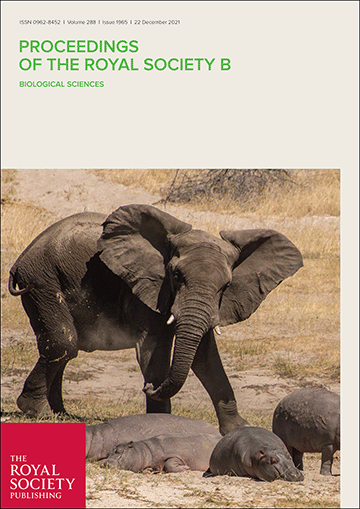- Programme area:3) Dimensions of Complexity of Aquatic Systems
Leveraging big data to uncover the eco-evolutionary factors shaping behavioural development
In this review, the authors provide a guide to state-of-the-art approaches that allow the collection and analysis of high-resolution behavioural data across development. They outline how such approaches can be used to address key issues regarding the ecological and evolutionary factors shaping behavioural development.
Integrating urban water fluxes and moving beyond impervious surface cover: a review
This review paper by international female experts on urban hydrology identifies gaps in our understanding of how water flows through built landscapes. It focuses on key topics within urban hydrology related to water quantity, incl. runoff and streamflow generation, soils and soil water, groundwater, vegetation, and climate; describes challenges and opportunities in the field of urban hydrology.
Mixing dynamics at river confluences governed by intermodal behaviour
The authors introduce a theory for confluence mixing dynamics of shallow flows, in which the mixing process is controlled by two modes: one similar to a wake behind an obstacle and the other similar to a mixing layer between two parallel flows. The findings, supported by field-based experiments, provide insight into different modalities of flow structure controlling mixing at river confluences.
Using stable water isotopes to understand ecohydrological partitioning under contrasting land uses in a drought-sensitive rural, lowland catchment
To analyse the influence of vegetation on water partitioning under land management strategies, the authors used stable water isotopes with contrasting land covers and soil types in the Demnitzer Millcreek. The study underlined the need for long-term observations of land use changes and drought-sensitive vegetation to evolve a drought resilient land management considering time lags.
Dynamics in impervious urban and non-urban areas and their effects on run-off, nutrient emissions, and macroinvertebrate communities
About 20 % of the newly sealed area is not in urban areas, but in rural areas, according to the model calculations of this study. Calculations of nutrient fluxes into water bodies have not taken these new sealings in rural areas into account, because these are often based on land use maps and consider urban areas. As a result, the nutrient loads of water bodies are systematically underestimated.
Urban biotic homogenization: approaches and knowledge gaps
The authors mapped and analyzed the literature on the hypothesis of urban biotic homogenization. They identified 225 studies addressing the hypothesis. Half of them investigated homogenization across cities, the other half investigating homogenization within cities. There are strong research biases and thus knowledge gaps in the literature and about 55% of the studies supported the hypothesis.

Water cycling and partitioning through the soil–plant–atmosphere continuum in a subtropical, urban woodland inferred by water stable isotopes
The authors conducted a sampling campaign of water isotopes, combined with climatic and hydrometric data across an evergreen broad-leaved woodland, to assess event-based changes in water cycling and partitioning. Quantifying the transfer of water in the soil-plant-atmosphere continuum improved the understanding of water cycling and partitioning in an urban woodland in a monsoon humid region.
Towards the outwelling hypothesis in a Patagonian estuary: first support from lipid markers and bacterial communities
Fatty acid markers, stable isotopes of C and N, and bacterial communities were investigated in a mesotidal estuary of the Patagonia to assess the Odum’s outwelling hypothesis. Rhodobacterales were likely early colonizers of the outwelled organic matter and the exportation of nutrients and organisms and their essential fatty acids from the wetland was inferred, supporting the findings of Odum.
The role of boundary mixing for diapycnal oxygen fluxes in a stratified marine system
The research team investigated the vertical oxygen flux through the halocline in the Baltic Sea using high-resolution temperature and oxygen profiles during different seasons. Oxygen transport showed a strong seasonality and was higher in autumn compared to summer and winter. The shoreline regions were responsible for >80% of the total oxygen transport through the halocline.
Fate of trace organic compounds in the hyporheic zone: influence of microbial metabolism
The authors investigated the influence of microbial processes on the fate of trace organic compounds in stream sediments. The study demonstrates the usefulness of the fluorescent tracer system resazurin-resorufin for determining microbial metabolism and disentangling specific reactive properties and ultimately their influence on the fate of contaminants in natural hyporheic zones.










